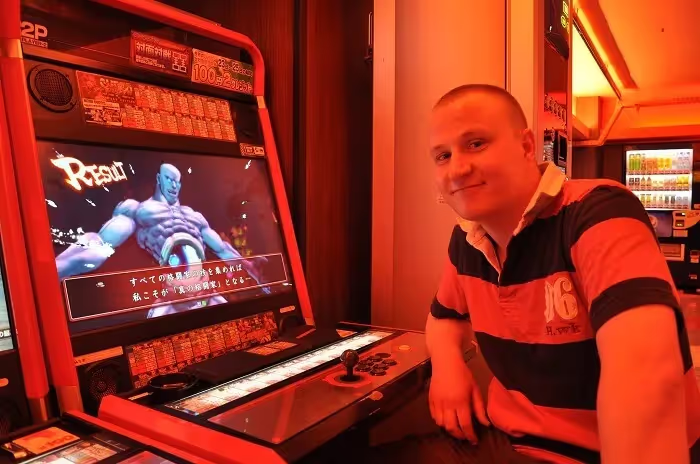Gris is the very epitome of an art game, where your reason for continuing isn’t necessarily tied to your enjoyment of actually playing, but rather to the discovery of what visual delight awaits you next. You see, while Gris is one of the most beautiful experiences to emerge from an indie studio in recent years, the game itself is far more basic. The watercolour design flashes between primary colours as you guide a voiceless girl across a series of gorgeous landscapes, encountering crumbling ruins in ancient cities, luscious forests with bizarre creatures, and caverns filled with waterfalls and rock pools. Navigating each area is relatively simple. A combination of jump and double jump takes care of eighty percent of the game, while the rest is handled by the sparse additional mechanics drip-fed to you along the way.

It’s a slow starter, but once you become accustomed to its simplicity, Gris provides a cathartic experience. Each area revolves around the collection of orbs to unlock the next, transitioning with a dazzling change of colour that perpetuates across the level. You’re unlikely to ever get confused about where to go next since the game is linear to a fault. Ledges and platforms are signposted throughout, swarms of butterflies indicate a boost to a level above, and cracked floors signify an area for you to break through. There are a couple of points where the platforming frustrates, but only in comparison to the easiness of what came before. Three to four hours will see you through to the end, and when the credits roll you’ll feel less like you’ve completed a game and more like you’ve watched an arthouse film, or one of Lost’s more surreal episodes.

Despite its simplicity, a host of technical tricks aim to elevate the simple platforming to keep it fresh throughout. Some, such as an ice blast which freezes your silhouette and briefly turns it into a traversable platform, are used sparingly — almost too much so, given how innovative they are. But that’s a recurring theme with Gris, it barrels you ever onward to the next beautiful environment, the next evolved platforming mechanic, the next opportunity for a gorgeous screen capture. At one point your entire perspective is reversed on screen when you break through a barrier, offering up another set of puzzles. Different coloured butterflies play with light and movement, glowing orbs carried by birds unveil hidden staircases, and flowers reveal ledges when activated with one of your later skills.

There’s even an underwater level which manages to be both enjoyable to play and spectacular to look at; a chase scene towards its later stages is both a visual and audio triumph, the music hitting a crescendo at exactly the right time, resulting in a true “punch the air” moment. That is, until you realise that much of that scene isn’t actually reliant on player interaction. You could put down the controller and let the game play itself and the outcome would remain unchanged.
This is the biggest problem with Gris: it is so engrossed in bombarding you with beauty that it often forgets that you’re here to play. Basic platforming aside, there really isn’t much depth to the actual gameplay. The girl’s dress morphs into a solid block to smash through platforms, or gently billows down when you take huge leaps of faith off a cliff into nothingness. On a couple of occasions, notably during what could be described as “boss battles”, these functions are used in different ways, but otherwise the jumping around feels like an afterthought, masked by some superb zoom and pan effects that hammer home how much time has been spent on the game’s art direction.

Like a piece at the Tate Modern, much of Gris is left to you to decipher. Sadness perpetuates throughout and the story dials up the melancholy relentlessly, but without a focus for the emotion it’s difficult to get invested. Even the superb audio gets on board, using strings, panpipes and even electronica to tug at your heartstrings while not actually revealing much about your goal. A statue of a girl at the beginning appears throughout and seems to be the catalyst for your character’s grief along with the reclamation of your voice, but the true reason for your journey is never revealed. The overuse of opaque metaphor and subtlety in Gris means that the emotion it seems to want to evoke never fully materialises in the way that Brothers: A Tale of Two Sons or The First Tree managed.

And that’s a real shame, because Nomada Studio has created a polished, gorgeous experience which, even taking into account its flaws, is hard to dismiss entirely. As with most art, you’ll come away with a different opinion to the next person and there’s no doubt that Gris is likely to prove divisive. For this reviewer, the game’s beauty was layered over the surface of a derivative platform game; a truly excellent game needs it to be more than just skin deep.
You can subscribe to Jump Chat Roll on your favourite podcast players including:
Let us know in the comments if you enjoyed this podcast, and if there are any topics you'd like to hear us tackle in future episodes!



